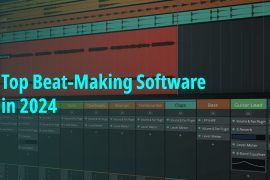In this era, where online shopping is the norm, the load on warehouses managing products has increased substantially. To ensure the smooth functioning of warehouses, the warehouse management software systems come into play. It fulfills the various needs of the warehouse and ensures 100% functionality.
The market offers an abundance of Warehouse Management Software Systems, leaving people confused with what WMS to choose. That is why SaaSworthy has put together the top 9 best Warehouse Management Software systems of 2021.
Table of Contents
What is a Warehouse Management Software System?

A warehouse management software system is one that keeps track of all the warehouse operations, such as dispatching, tracking, and returning orders. A paperless warehouse management system saves money by increasing efficiency and accuracy and also improves customer experience.
Read through the entire article to find out which warehouse management software system suits your business the best.
1. Oracle Warehouse Management
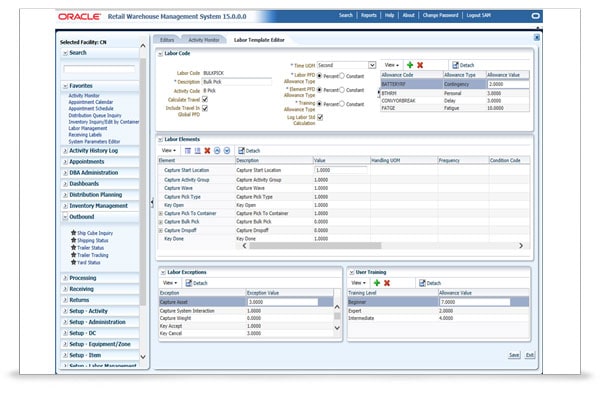
Oracle Warehouse Management is SaaSworthy’s top choice when it comes to warehouse management software. Oracle WMS is cloud-compatible, making it suitable for organizations of all sizes.
It enables consumers to manage, refine, and streamline warehouse capacity, thus increasing efficiency, improving accuracy, and lowering inventory costs. It serves as a central hub for the manufacturing, distribution, and service sectors.
The various features of Oracle Warehouse Management are:
- Intelligent dashboards provide real-time operational insights
- Via inbound receiving and dispatching, businesses will get a clear picture of their inventory
- Mobile connectivity enables customers to access their activities at any time and from any place
- It can cut inventory costs by improving warehouse accuracy, lowering safety stock levels, and having real-time inventory visibility
The limitations of Oracle Warehouse Management are:
- It involves a time-consuming and complicated integration process.
- You can customize labeling, printing, and documentation features only to a certain extent.
2. Zebra WMS
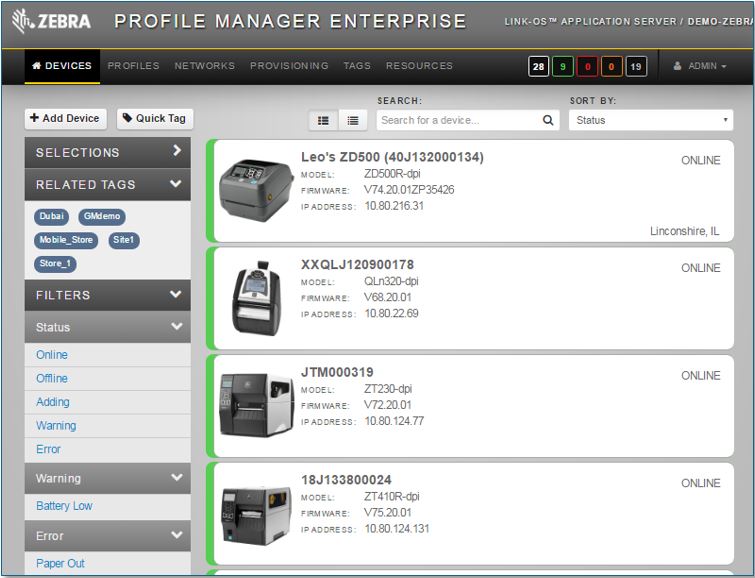
Zebra WMS provides end-to-end applications ranging from mobile devices to wireless wifi networks and RFID infrastructure. It thereby allows employees to access company data in the workforce. Zebra’s mobile computing, scanning, and printing tools bind each functional area in the warehouse, allowing you to achieve transformational benefits with agility.
The various features of Zebra WMS are:
- It gives the employees a hands-free workspace so they can focus on their jobs and keep the line running.
- Monitors assets continuously through the reverse supply chain to collect, allocate a resolution, and restock inventory as soon as possible
- Its multi-modal and voice-directed picking technology improves precision and efficiency by optimizing the picking process.
- Displays the current status and location of all assets, resulting in increased production and cycle count performance
The limitation of Zebra WMS is:
- Sometimes the system freezes and hangs due to minor glitches and requires a reboot.
3. Manhattan Warehouse Management

SaaSworthy recommends Manhattan warehouse management software if you want a highly mobile application that focuses on simplicity, sophisticated algorithms, and complex AI. It was designed to maximize supply chain productivity and coordination in operation by increasing efficiency and optimizing everyday activities.
The various features of Manhattan Warehouse Management are:
- Provides clients with increased accuracy and data visibility to help alleviate any concerns they may have
- It offers both on-premise and cloud-based software solutions.
- Using advanced slotting features, it improves the layout of products in the warehouse.
- It connects with several external solutions for a multi-carrier setting by using the External Parcel Integration (EPI) platform.
The limitations of Manhattan Warehouse Management are:
- It is not possible to track the movement of goods purchased from external retailers or in-plant production.
- It is not possible for customers to print receipts or send receipt copies to customers ahead of shipments.
4. HighJump Warehouse Advantage
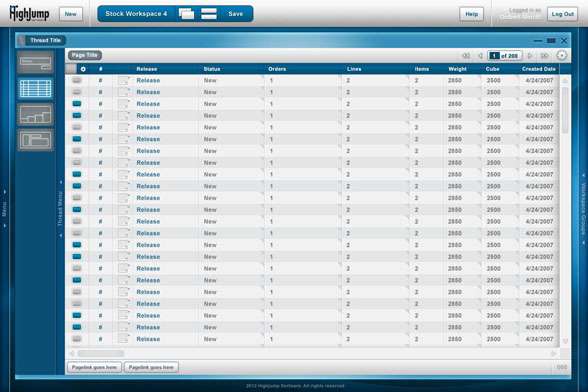
HighJump Warehouse Advantage is a warehouse management software that is both agile and flexible. This technology is designed to expand with your warehousing activity while also offering cloud-based automation and organizational tools. This framework provides 3PL vendors with the tools they need to handle multi-client warehousing activities while smoothly integrating them into your preferred ERP software.
The various features of HighJump Warehouse Advantage are:
- Provides a variety of metrics for organizing, tracking, and reporting labor assignments, as well as recording team member productivity
- Regardless of the commodity being transported, its Warehouse Control System will help automate your material movement across the warehouse
- HighJump’s flexible nature enables users to build a portal that best suits their needs
- Provides a plethora of resources to assist in the overall optimization of the supply chain.
The limitations of HighJump Warehouse Advantage are:
- It does not work with CRM software such as Salesforce.
- It does not support business intelligence and reporting capabilities.
5. Fishbowl Inventory

Fishbowl Inventory is a warehouse management software that can either be installed on-premise or hosted in the cloud. Fishbowl Inventory partners with businesses of all sizes who want to improve their warehouse administration and address inventory-related problems. It improves manufacturing, warehouse product accuracy, and asset monitoring which are supply chain-focused processes.
The various features of the Fishbowl Inventory are:
- Collects and converts data produced by processes such as distribution and orders into an open format
- Optimize the supply chain by automating reordering as well as streamlining pick, pack, and transporting
- Notifies users of the location and origin of their necessary manufacturing components
- Allows people to print their own shipping labels, and you can track products using mobile devices for FedEx and UPS.
The limitations of the Fishbowl Inventory are:
- It does not have an eCommerce or native shipping module.
- Only the English language is supported
- Not does include on-premise deployment
6. WMS Express

WMS Express is a cloud-based warehouse management software that is specifically developed for third-party logistics (3PL) warehouses. WMS Express is designed for entrepreneurs and 3PLs that need a functional approach to satisfy their immediate needs. It also has the flexibility to adapt the system as the company evolves. Therefore, SaaSworthy recommends WMS Express to third-party logistics (3PL) warehouses.
The various features of WMS Express are:
- Regardless of your warehouse setup, WMS Express interacts smoothly with your Business Central cloud implementation.
- WMS Express is compatible with both Windows and Android-based mobile devices.
- By checking barcodes to handle various warehouse activities, you can save a lot of time while increasing accuracy.
- Scans 2D barcodes, which have a huge storage, allowing you to store and capture more data in a single scan.
The limitation of WMS Express is:
- It is built only for single-location warehouses with a maximum of 5 users.
7. Logimax WMS

Logimax is a warehouse management software that takes advantage of the IBMi platform’s capabilities. It is a browser-based solution that can be deployed on-premise or in the cloud. It is designed for third-party logistics and delivery firms in sectors such as consumer packaged goods, pharmaceuticals, cold storage, and others.
The various features of Logimax WMS are:
- Users can access a variety of analyses and reports to monitor key performance indicators (KPIs), patterns, income, and costs.
- Provides RF data processing assistance, automated third-party accounting, a report designer, and a customer self-service platform.
- Every invoice is automatically tailored for each consumer or commodity to follow the requirements associated with that customer.
- Takes charge of the warehouse, manages inventory, accounting, and assists with reducing shipping costs.
The limitations of Logimax WMS are:
- It does not offer a free trial, and you have to purchase upfront.
- The product’s security and dependability are questionable as a cloud-based solution.
8. NetSuite WMS

NetSuite WMS is a hybrid deployment approach that lets companies streamline processes while minimizing managing costs by using industry-wide best practices. Its multi-location management facility comprises warehouse management, shipping management, and returns management from a single network. It has a central dashboard with a visual, drag-and-drop widget system.
The various features of NetSuite WMS are:
- Manages multiple warehouses and clients through dedicated client portals to benchmark operations and facilitate direct communication
- Manages purchase demands, distributor invoices, and reorders while keeping track of vendors and materials
- Real-time stock-level notifications, lot monitoring, and inventory adjustments provide complete inventory visibility and control.
- It makes processes more streamlined and manageable with native integration with NetSuite products, as well as access to third-party integrations.
The limitations of NetSuite WMS are:
- It is challenging to produce personalized reports without the assistance of support staff.
- The cost of installation and customization is exorbitant.
9. Softeon
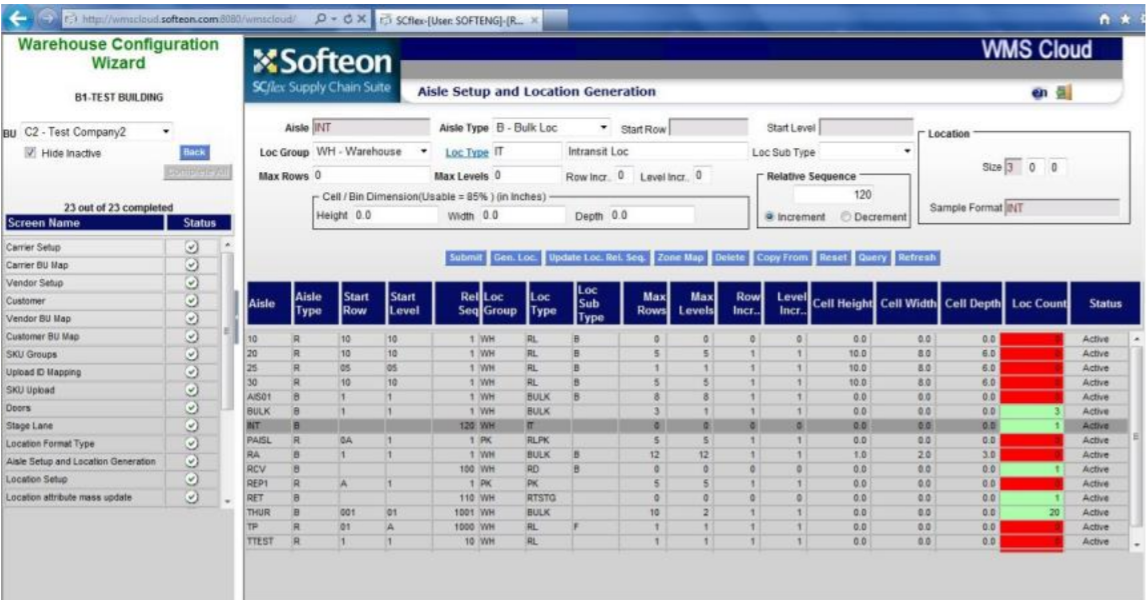
Softeon is a warehouse management software that provides a broad range of tools to manage all of the simple processes of a modern warehouse. Softeon offers a platform that focuses on increasing a client’s ROI beyond streamlining basic functionality. Many companies and businesses, including Sears, Sony Music Group, and Integrated Business Systems, have implemented Softeon’s WMS solution.
The various features of Softeon are:
- It employs intelligent cycle counting in addition to RFID and UPC support.
- It offers a variety of modular receiving solutions to help simplify warehousing operations, such as ASN receiving and blind receiving.
- Includes robust outbound processes such as integrated parcel manifesting, dynamic palletization, voice selection, and wave management
- It offers end-to-end monitoring of critical products as they move in and across the warehouse.
- Integration of EDI, ERP, and financial networks improves collaboration with manufacturers and distributors.
The limitations of Softeon are:
- It lacks a strong labor-management tool.
- There is no ROI mechanism available to detect and strengthen supply chain shortfalls.
Conclusion
It is to be noted that you can avail of the warehouse management software mentioned above only after purchasing. Some of them also offer a free trial for you to check them out before buying.
We hope this article provided you some insight regarding the various types of warehouse management software available in the market. You would now be able to choose a warehouse management software after weighing its pros and cons.

